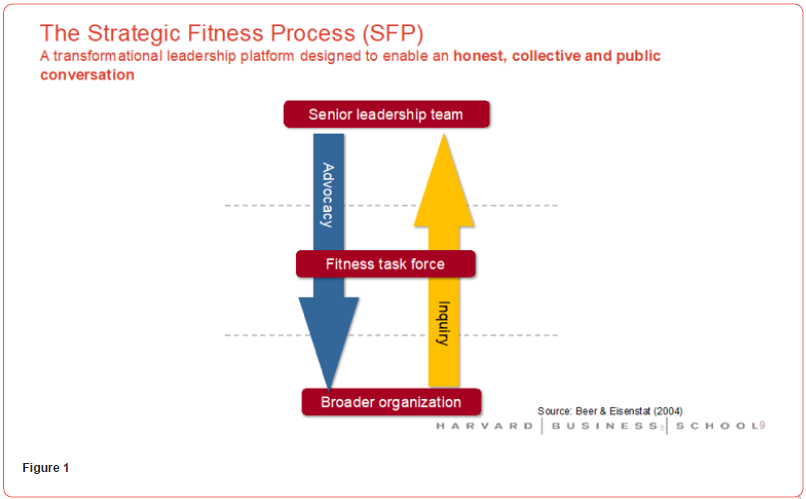 Opinion
Opinion
Leading Change by Enabling Truth to Speak to Power
Michael (Mike) Beer*
Professor Emeritus, Harvard Business School, Massachusetts, USA
Michael (Mike) Beer, Professor Emeritus, Harvard Business School, Massachusetts, USA
Received Date:December 12, 2023; Published Date:December 21, 2023
Introduction
Most business, government, nonprofit, and NGO organizations realizes by now that command-and-control leadership does not successfully change organizations into high trust, commitment, and performance organizations. Such organizations are needed for sustainable success in a world of constant technical, market, and social change.
Building a sustainable; High-commitment; Highperformance organization: It’s not easy
Studies find that some seventy percent of efforts to move away from command-and-control to a high-trust, high-commitment organization fail. Why? Even the attempt to get away from top-down leadership is typically managed . . . top down. Top management introduces best practices that people are expected to adopt. What that can’t do, though, is surface the truth about why the organization is stuck-the reasons which people who aren’t top-level know but aren’t saying.
Fundamental transformation in culture from low to high trust and commitment requires a change process that is itself high trust and commitment. At Becton Dickenson (BD), for example, CEO Ed Ludwig and his soon-to-be successor Vince Forlenza did not hire a consulting firm to recommend structural changes that would then become marching orders for lower-level executives. Instead, they launched an organization wide honest, collective, and internally public conversation-using the Strategic Fitness Process (SFP)-about which of BD’s strengths had to be preserved and what internal barriers would sabotage the proposed strategic direction.
Honest, collective, and public conversations involve two truths. Senior management shares with lower levels their hard and sometimes inconvenient truths about what the organization must do to achieve a high-performance, high-commitment culture. Those below the top share what they consider the organizational strengths that need to be preserved and the sometimes inconvenient truths about organizational, management, and leadership barriers to effective-never mind improved-performance and commitment. The conversation becomes a joint change effort. Ludwig and Forlenza used SFP as a structured process enabling open, safe, and respectful honest conversations that might well otherwise either get nowhere or spin out of control.
The Strategic Fitness Process (SFP)
The developers of SFP, myself and my colleague Dr. Russ Eisenstat, knew from experience and research that hierarchy creates organizational silence. People are afraid to tell top management the unvarnished truth about what is blocking the organization’s effectiveness, commitment, and performance-truth that often reflects poorly on top leadership and therefore puts the messenger at risk.
Years of research have revealed seven such barriers consistently identified by lower levels. We named these the organizational silent killers because, like hypertension and cholesterol, they can cause enormous damage long before being discovered. Learning about these is difficult. Top management, like any of us, can make mistakes in conversations that undermine openness and trust; for example, by blaming others and defending themselves. SFP provides ground rules to avoid such errors.
The Strategic Fitness Process: A Transformational Leadership Platform
SFP works by iterating between advocacy and inquiry. A detailed description of each step can be found in Chapter 1 of my book Fit to Compete, available on Amazon.
Before SFP even begins, top management informs the organization that an honest, organization wide conversation to improve the organization will be carried out. The senior team promises that, at the end of the process, it will communicate what it hears-however unflattering-and its plans for change. SFP guides the senior team first to agree on a two-page Statement of Direction, making clear the organization’s performance goals, strategy, and values.
They then commission a task force of high performers from all parts of the organization who will, in turn, select and interview a total of approximately 100 inside and outside stakeholders. Task force members present these stakeholders with the Statement of Direction-an advocacy phase of the process. This is followed by a confidential interview about the individual’s views of the Statement and of the organization’s strengths and its barriers to effectivenessan inquiry phase.
The inquiry phase continues with feedback-organized into key themes-presented to the senior team by the task force. Then the senior team, working alone, diagnoses root causes of the reported ineffectiveness and develops an action plan for change. They present it to the task force for critique and, if needed, jointly revise it. This key step develops a sense of partnership between leaders and the rest of the organization because it confirms that senior management is really listening.
What the senior team heard-the good, the bad, and the ugly-and the action plan for change is then communicated in a larger meeting of the extended leadership team-those who were interviewed and other key people. The objective here is to obtain their reactions and mobilize them for action. Figure 1 illustrates the SFP process. It sounds like SFP could take months; in fact, it usually takes six to eight weeks.
We have found that most organizations require a structured process like SFP, along with help from a facilitator, to orchestrate an organization wide conversation, particularly if they’ve never done anything like this before (Figure 1).

Does it work? Becton Dickinson, successful but foreseeing serious market pressures, transformed itself from a good operating company to a more innovative-and even more successful-company because SFP enabled it to foster trust and commitment to change.
Acknowledgement
None.
Conflict of Interest
There is no conflict of interest.
-
Michael (Mike) Beer*. Leading Change by Enabling Truth to Speak to Power. Sci J Research & Rev. 4(1): 2023. SJRR. MS.ID.000578.
UN General, Spatial planning, Lighting, Food storage, Garbage disposal
-

This work is licensed under a Creative Commons Attribution-NonCommercial 4.0 International License.






